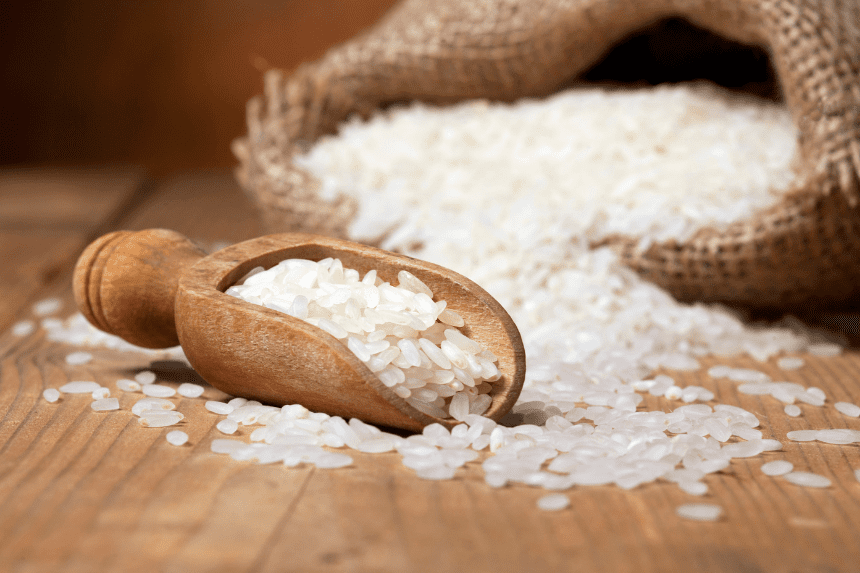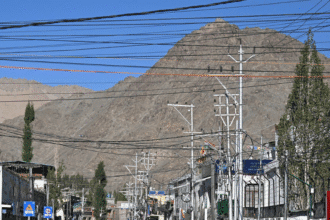From families worried about grocery bills to farmers trying to adjust to shifting markets, and politicians under increasing public pressure, the Japan rice price crisis has become a major obstacle affecting all aspects of society. Once a symbol of stability and custom, rice is today at the hub of a complicated social and economic issue. In just one year, prices have more than doubled, setting off knock-on effects endangering political stability in Japan, rural livelihoods, and food security.
This crisis reflects more fundamental problems in agricultural policy, supply chain management, and demographic changes than it does merely numbers on a price tag. Japan’s future depends on knowing what caused this state of affairs, how different groups are responding, and what workable remedies might be.
Why did Japanese rice prices explode?
A simple but crucial mismatch between supply and demand drives the Japanese rice price crisis. The Ministry of Agriculture of the government projected that the demand for rice would reach 6.8 million tonnes for the years 2023–2024. But actual demand turned out to be almost 7.05 million tons, a notable underestimation. Simultaneously, rice output fell short of projections, just generating roughly 6.61 million tonnes. Enough of this supply-demand mismatch would drive prices skyrocketing.
Several elements help to explain demand above projections. Japan saw an increase in domestic travel following the epidemic with more people going back to eateries and bars. This conduct raised rice consumption outside the typical household norms. Moreover, rice stayed somewhat reasonably priced compared to other foods, which motivated customers to buy more.
The agricultural ministry also linked part of the production drop to unusual weather patterns, including higher-than-average temperatures influencing crop yields and reduced rice quality. These elements—unexpectedly high demand and limited supply—generated the ideal storm that brought about the present crisis in Japanese rice prices. Read another article Walmart Tariff Impact 2025
How Are Families Managing Increasing Rice Prices?
The price inflation has real effects for average households. In Japan, rice is central to daily meals, nutrition, and cultural customs rather than only a basic food. First-time Yokohama mother Memori Higuchi shows actual concern about how she will keep quality nutrition for her children. “I want my daughter to eat well,” she says, “but if prices keep going up, we may have to cut the amount of rice my husband and I eat.”
Particularly for those with young children or low incomes, the load on homes is mounting. Some families have difficult decisions to make: either reallocating their grocery budget, cutting back on rice consumption, or switching to lower-quality or imported varieties, so compromising other basics.
Moreover, consumers strongly prefer locally grown rice, which gives the choice to buy imported substitutes emotional weight. Because consumers worry about food safety as well as affordability, this cultural connection renders the crisis more sensitive and politically charged.
How Are Farmers Handling the Price Explosion?
For many farmers who have suffered years of poor income, the price rise provides a welcome bonus. Traditionally, producing 60 kg of rice cost roughly 18,500 yen; but, in recent months, the selling price has surged to between 40,000 and 50,000 yen. This price explosion offers a long-overdue chance for struggling farmers to get financially back on track.
On the suitable reaction to this crisis, the farming community is split though. Like Shinya Tabuchi, some younger farmers contend that the sector should get more market-driven and competitive so that unprofitable farms may leave the business. They think that safeguarding all farmers, regardless of output, has distorted the market and discouraged creativity.
On the other hand, seasoned farmers such as Kosuke Kasahara stress the need for rural community cohesiveness. For them, farming is a way of life that preserves regional economies and customs rather than just a business. Letting farmers fail worries them about depopulation and a fall in rural areas. Kasahara supports government policies guaranteeing a minimum purchase price, which would ensure farmers’ sustainability even though they are less than the present market pricing. Read another article on Gold Prices US-China Tensions
The Government Has Taken What Actions?
The way the government has handled the Japan rice price crisis has been circumspect and reactionary. Japan has always kept an emergency rice stockpile for natural disasters and other crises; it has hardly ever released these reserves for price control needs. Aiming to lower prices, the agriculture ministry auctioned some of its emergency rice supplies in March in the face of growing public unhappiness and political pressure.
Notwithstanding this rare intervention, rice prices have not stabilised, which has led to debates on first-time imports of rice from South Korea and maybe the United States 25 years ago. Such imports are divisive since consumers often favor local varieties and food safety and quality issues call for attention.
Politically, the crisis has already caused damage. His resignation and increased public mistrust of the government’s crisis management capability resulted from a recent scandal involving the insensitive comments made by the farm minister on never personally needing to buy rice. The ruling party has to carefully balance the needs of consumers and farmers, especially the older generations more likely to vote, as a key national election looms. Read another article on the Myanmar Kidney Trade
How Might Japan’s Rice Problems be Solved?
Looking ahead, Japan must have a multi-pronged approach to solve the current crisis in rice prices and stop more disturbances. Getting demand forecasts more accurate comes first. The government has to include into its planning models current trends including growing tourism and changing consumption patterns.
Additionally important is helping younger farmers. Many wish to innovate and diversify, but they run against structural and financial constraints. Better training, capital access, and incentives for developing alternative rice varieties—such those used for cattle feed or sake—can help to stabilize income and lower overreliance on conventional rice.
Maintaining openness and honest public communication is also another crucial step. To restore confidence, consumers want unambiguous knowledge on government policies, pricing, and supply. Simultaneously, the government should keep funding strategic rice reserves and improving policies to strike a mix between rural sustainability and market forces.
Finally, allowing selective rice imports in trade negotiations will help to alleviate temporary shortages; but, it should be managed carefully to honor cultural preferences and food safety criteria.
Finally, a crisis demanding careful response calls for attention.
The Japan rice price crisis is a complex problem affecting food security, cultural identity, rural livelihoods, and political stability, rather than only one of economics. Dealing with this crisis calls for cooperation among consumers, legislators, farmers, and business players.
Japan can develop resilience against future shocks by modernizing agricultural policies, enhancing forecasting, helping younger farmers, and preserving open lines of contact. The crisis offers a chance to improve the whole rice supply network, thereby guaranteeing sustainability and affordability for the next generations.
Using careful leadership and community involvement, the nation can turn this obstacle into a stepping stone for a safer and richer agricultural future.








